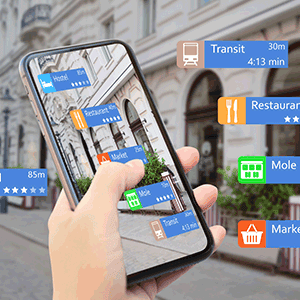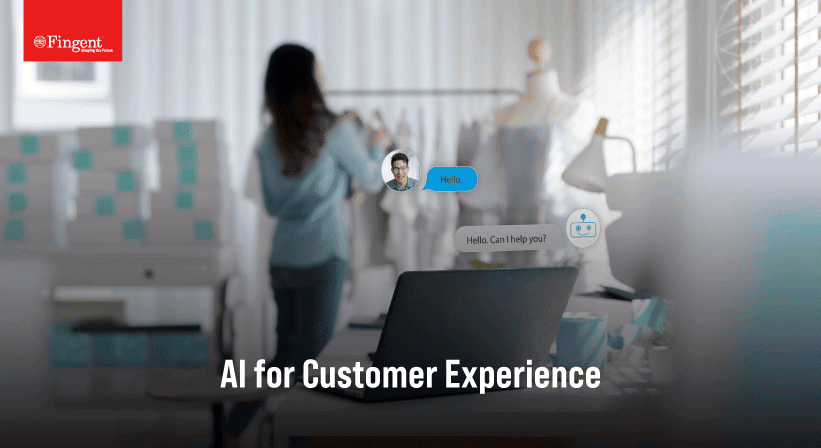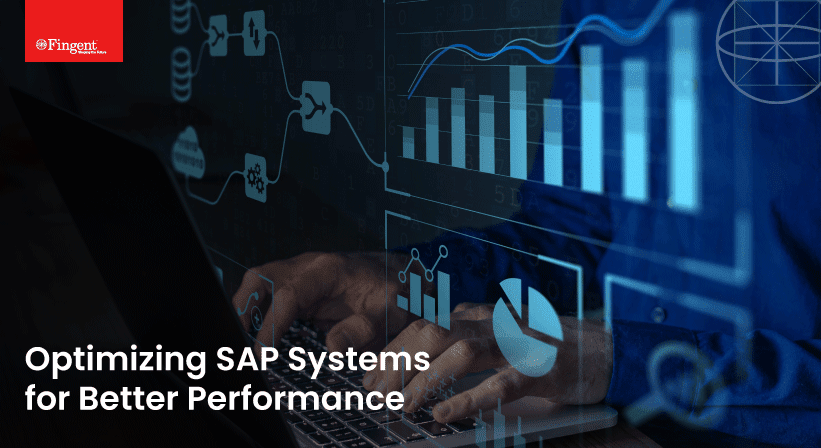Category: Business
In today’s ever-evolving business landscape, the concept of “Digital-First” isn’t just a buzzword; it’s a strategic necessity. For CIOs, CTOs, and IT Managers, embracing digital transformation isn’t just a choice; it’s a critical strategic move. It’s the pathway to gaining a competitive advantage, exceeding customer expectations, leveraging data for success, accessing global markets, and fortifying your digital defenses.
In this blog, we’ll explore why launching your business with cutting-edge technology is of paramount importance.
Why Starting with Cutting-Edge Technology Matters
Here are some key aspects and applications of Digital first:
1. Online Presence: Your Digital Storefront
In an increasingly online world, your digital presence is your storefront, and its impact is profound.
If your business lacks a robust online presence, you’re missing out on a significant slice of this digital pie. Your online presence is your digital storefront and first impressions matter. It’s the place where your customers interact with your brand. Think of it as the front window of a physical store – it needs to be inviting and informative.
Applications: E-commerce, Social Media, Content Marketing
2. Customer-Centricity Rules
PwC’s Global Consumer Insights Survey reveals that 43% of consumers plan to increase online shopping in the next six months. The study further said, “Consumers are seeking less friction…they’re continuing to experiment with the next generation of digital platforms, including the metaverse.” Starting with cutting-edge technology allows you to provide those seamless, personalized experiences that customers crave while they shop online.
3. Mobile-First Design: Meeting Customers Where They Are
With the proliferation of smartphones, being mobile-friendly isn’t just a choice; it’s a necessity. Oberlo reports that mobile devices account for 55.5% of web traffic globally, surpassing desktop usage. Ignoring mobile users means missing out on more than half of your potential audience. Consider mobile devices as the primary means through which customers engage with your brand – like a shop accessible anytime, anywhere.
Applications: Responsive Websites, Mobile Apps, SMS Marketing
4. Competitive Imperative
Jorge Lopez, a distinguished VP analyst at Gartner, says, “Boards of directors (BoDs) have reached a point where digital business strategy and overall business strategy are one and the same.” It’s clear that being “Digital-First” is no longer a choice; it’s a competitive imperative.
5. Security and Privacy: The Digital Trust Factor
As digital interactions increase, so does the importance of security and privacy. Cybersecurity Ventures predicts that cybercrime will cost the world $6 trillion annually by 2021. Neglecting security is a gamble on your business’s survival. Cyber threats are rising! The worldwide expense of a data breach in 2023 stood at $4.45 million, reflecting a 15% rise over a three-year period. Cyberattacks are a growing concern for businesses and consumers alike.
Applications: Encryption, Multi-Factor Authentication (MFA), Regular Audits
6. Data-Driven Success
McKinsey’s research shows that data-driven organizations are 23 times more likely to acquire customers, six times more likely to retain customers, and 19 times more likely to be profitable. Beginning your business with cutting-edge technology means you’re setting up to be data-driven from the get-go.
Read more: A Quick Guide To A Successful Digital Transformation Journey!
Key Technologies Commonly Implemented to Enhance Digital-First Initiatives
To thrive in the digital environment, it’s crucial to understand the core technologies that underpin digital-first initiatives. Here, we’ll delve into some of the key technologies providing a clear overview of their significance.
1. Cloud Computing: The Foundation of Scalability
Cloud computing is the engine powering the scalability and flexibility of modern digital solutions. Services like AWS, Azure, and Google Cloud provide businesses with the ability to store data, run applications, and access resources remotely. This technology not only reduces infrastructure costs but also enables rapid scalability, making it essential for digital-first operations.
2. Artificial Intelligence (AI): The Catalyst for Data-Driven Insights
AI encompasses a range of technologies, including machine learning and natural language processing. It enables businesses to analyze vast datasets, make predictions, automate processes, and gain valuable insights. AI is the driving force behind personalized recommendations, predictive analytics, and automation that enhance the efficiency and decision-making capabilities of digital-first organizations.
3. Internet of Things (IoT): The Network of Connected Devices
IoT has far-reaching applications, from smart manufacturing and asset tracking to environmental monitoring and healthcare devices. IoT enables businesses to gather real-time information, improve operational efficiency, and create new services and experiences.
4. Blockchain: The Trustworthy Digital Ledger
Blockchain is a distributed ledger technology that offers transparency, security, and trust in digital transactions. It’s the foundation of cryptocurrencies like Bitcoin and is increasingly used in supply chain management, voting systems, and more. Blockchain ensures the integrity and immutability of data, reducing the need for intermediaries and enhancing security.
5. 5G Technology: The Accelerator of Connectivity
5G, the fifth generation of wireless technology, brings unprecedented speed and connectivity. It enables near-instantaneous data transfer, low latency, and support for a massive number of connected devices. Businesses leverage 5G for applications like augmented reality, autonomous vehicles, and real-time communication, enhancing customer experiences and expanding possibilities. These technologies and others form the backbone of digital-first initiatives, offering businesses the tools to adapt, innovate, and thrive in the digital age.
Use Cases Across Different Sectors
The digital-first revolution isn’t confined to a single industry; it’s a tide sweeping across sectors, reshaping the way businesses operate, interact with customers, and innovate. Let’s explore some use cases in a variety of sectors, showcasing how digital-first strategies are driving transformation and success.
1. Retail and E-commerce
- Personalized Shopping Experiences: In the retail and e-commerce realm, digital-first initiatives are all about creating personalized shopping journeys. AI-driven recommendation engines analyze customer behavior and preferences to suggest products tailored to individual tastes. This drives sales and elevates customer satisfaction to unprecedented levels.
- Seamless Checkout Processes: Digital-first technologies streamline the checkout process with one-click payments, reducing cart abandonment rates. Amazon’s “Buy Now with 1-Click” is a prime example of simplifying the purchasing journey for customers.
2. Manufacturing
- Predictive Maintenance: In manufacturing, IoT sensors are deployed on machinery to monitor performance and detect anomalies. These sensors provide real-time data, enabling predictive maintenance. Machines are serviced before they break down, minimizing downtime and optimizing production.
- Quality Control and Automation: Machine learning models can be employed to analyze images and identify defects in real-time thus ensuring products meet stringent quality standards. Automation and robotics further enhance manufacturing efficiency, reducing errors and labor costs.
3. Financial Services (Fintech)
- Digital Banking: Fintech companies are revolutionizing the financial sector with digital banking services. Mobile apps provide customers with access to their accounts, transactions, and even investment opportunities, all in the palm of their hands.
- Cryptocurrencies and Blockchain: Blockchain technology is reshaping the way financial transactions occur. Cryptocurrencies like Bitcoin offer secure, borderless, and decentralized digital currencies, challenging traditional banking systems.
4. Education (EdTech)
- Online Learning Platforms: EdTech platforms provide access to a vast array of educational resources, from interactive courses to video lectures. These platforms enable flexible, personalized learning experiences for students of all ages.
- AI-Powered Tutors: AI-driven virtual tutors assist students in their studies by providing immediate feedback and tailored learning paths. They adapt to individual learning styles and paces, enhancing educational outcomes.
5. Transportation and Logistics
- Route Optimization: Transportation companies use IoT and GPS technology to optimize routes, reducing fuel consumption and delivery times. Real-time tracking and predictive analytics ensure goods are delivered efficiently.
- Autonomous Vehicles: The transportation sector is at the forefront of autonomous vehicle development. These vehicles promise increased safety, reduced labor costs, and improved transportation efficiency.
6. Smart Cities
- Traffic Management: Smart cities employ IoT sensors and real-time data analysis to manage traffic flow dynamically. This reduces congestion, minimizes travel times, and improves air quality.
- Sustainable Energy: Smart grids and renewable energy sources enable cities to reduce their carbon footprint. IoT technology monitors energy consumption and production, optimizing energy use and promoting sustainability.
In each of these sectors, digital-first initiatives are not just about adopting technology; they’re about harnessing it to drive innovation, improve efficiency, and meet evolving customer expectations. The possibilities are vast, and the results are transformative, making the digital-first approach a crucial strategy for organizations in every industry.
How Can Fingent Help?
In a digital-first world, success hinges on leveraging technology effectively. Fingent is your trusted partner on this journey, helping you harness the power of digital to drive innovation, growth, and competitive advantage. Together, we can navigate the complex digital landscape and turn challenges into opportunities. The future is digital, and Fingent is here to ensure you’re always one step ahead.
With our expertise in software development, AI, IoT, and more, we can tailor solutions to your specific needs. Whether you’re in retail, manufacturing, finance, education, transportation, or any other sector, we’ve got you covered. Give us a call.
Stay up to date on what's new

Featured Blogs
Stay up to date on
what's new



Talk To Our Experts
Stay up to date on what's new

Featured Blogs
Stay up to date on
what's new



Talk To Our Experts
Stay up to date on what's new

Featured Blogs
Stay up to date on
what's new



Talk To Our Experts
“In the digital era, privacy must be a priority. Is it just me, or is secret blanket surveillance obscenely outrageous?” – Al Gore
The internet is a great big place with infinite doorways. It continuously upgrades, and with these upgrades come a lot of benefits, although sometimes risks may need to be taken. Open Source is one of the many great developments in computer technology.
Open source is quite literally everywhere. It surges with immense power and serves as a strong foundation for most commercial codebases. It is intricately intertwined with modern developments to such an extent that code owners are often ignorant of the open-source components in their own software.
In this article, we will briefly examine what Open Source is, its potential problems, how to solve these problems, and some best practices to follow when developing open-source software.
So buckle up; it’s quite a journey!
What Is Open Source?
Open Source software, in simple words, is software that is developed and maintained through open collaboration, transparency, and public updates. It is made available, usually at no cost, for anyone to access, examine, edit, and redistribute however they like.
Open source is widely exploited by many developers and software creators worldwide for its numerous benefits. An entire generation of open-source tools is said to have been developed and used today by software developers. They use open source to enhance their creation and troubleshoot issues with a comfortable sense of security and at a very low cost.
Although open source is famous for sparing companies the extravagant licensing cost, it can inflict other slightly less jarring costs such as network integration, end-user support, and IT support. These services are generally included with proprietary software.
Despite this minor shortcoming, most companies prefer open-source software as they consider it as reliable and secure as proprietary software and feel more at home with open-source solutions. This sense of control and belonging could be because, with open source solutions, developers can inspect the program code and understand exactly what they are affixing to their computing infrastructure.
Read more: Is Open Source The Crucial Catalyst For Your Digital Transformation?
Potential Problems With Open-Source Software
As we’ve already seen above, Open Source can be a highly useful tool in software development, but due to its easily accessible nature, it tends to incur a few risks. Two of these risks are discussed in short below:
1. Long-term Sustainability
Sustainability in terms of software refers to the ability of a software program to be designed, developed, and implemented with a limited energy consumption rate and have the least amount of impact on the environment.
A recent article by Taylor & Francis Online stated that there are three distinct types of sustainability: Resource-based, interactional, and infrastructural. Resource-based sustainability refers to the ability of Open Source components to lure resources such as developers and high-value assets such as knowledge. Interactional sustainability deals with relationships that are created and sustained in open source. Finally, infrastructural sustainability, as the name suggests, deals with the infrastructure that is required for any work to be carried out.
2. Software Security
It is evident from all we have seen so far that security risks are prevalent in Open Source Software, and collaborating with these solutions can pose certain risks that require the company to be mindful. The use of open source software libraries has taken the world by storm and significantly impacted software security across various industries.
The 2023 report on Open Source Security and Risk Analysis (OSSRA), published by Synopsys, stated that the fraction of open source codebases with security vulnerabilities has consistently stayed relatively stable over the past two years.
The report also warned that considering how open source software is available as-is without any warranties, any risk that may occur solely falls on the shoulders of the user. This in turn makes the selection, security, and maintenance of Open Source Libraries the top priority in the software supply chain’s security.
Risk Management
Every form of growth in a company inevitably comes with its fair share of risks. These risks should not faze a business owner. Facing them head-on is the best solution; taking as many preventive steps as possible beforehand will help. Listed below are a few ways through which you can protect your organization and keep it locked and loaded:
1. Rely On Reputable Sources:
It is of the utmost importance that you use reputable sources when trying to download and access open-source software. This simple step will help ensure that the software you use is of good quality and has been appropriately examined and tested.
2. Ensure To Track The Licenses:
Keep a consistent track of the licenses associated with the open-source software you download and use. Doing so will ensure that you are not breaking any laws without your knowledge and are complying with the terms of the license.
3. Create An Open Source Policy:
Draft a crystal clear Open Source Policy to ensure that your company or organization is using the downloaded Open Source Software with diligence and is mindful of its sustainability.
4. Compatibility With Your Company:
This is a surprisingly underestimated risk management strategy. Always ensure that the Open Source Software you choose to implement meets your company’s needs and is aligned with your use case. This step involves examining the source code, software testing, and all relevant documentation.
5. Consider Using Assistant Tools To Help With The Process:
It is always wise to know when to ask for and when to accept help. There are many tools across the internet that can make the daunting process of tracking and managing open-source licenses easy. Use them. These tools can help decrease the chances of risk and can even foolproof your software.
6. Keep Up With The Trends:
In a world that is as fast-moving as ours, it would be foolish not to stay up-to-date with any new trends in the field of Open Source Software. Actively seek out these latest advancements in the open-source software world and how to implement them in your organization. Subscribing to relevant newsletters, following related blogs and social media accounts, and attending industry events can help you here.
7. Use Effective Integration Tools:
As mentioned earlier, using tools to help guide you through the process is solid advice, but the tools you use should also be effective. DevSec teams offer products and services that foster collaboration between DevOps and SecOps teams. These teams are highly reputable and widely used across the world. These teams can help you integrate security in your open-source software deftly from the very start.
Read more: How to ensure safe use of open source libraries.
Mitigate Risks and Leverage Strengths with the Right Partner
As is the case with many technological developments, Open Source has its fair share of benefits and risks too. It is cardinal to carefully analyze the security of Open Source Software before implementing it. Security should be the top priority of any company, and it should not be compromised at any cost.
Although Open Source Software may not be subjected to the same level of security testing as proprietary software, the entire process must not be neglected. Always remember that whatever risk is posed by these programs, careful planning and management can help you sail smoothly in heavy storms. Make a note to understand the risks and take wise precautions properly. This will help you incorporate and maintain strong security.
Fingent has worked with clients worldwide to build custom software solutions for them by leveraging several open source software development kits. Our experts know how to mitigate the risks and use the strengths of these software to create solutions that will catapult your business way ahead of the competition.
Give us a call, and let’s get to the details.
Stay up to date on what's new

Featured Blogs
Stay up to date on
what's new



Talk To Our Experts
SAP software, as most of us know, is a tool used to control all aspects of critical business functions specifically. It integrates and automates key processes, ultimately helping organizations run smoothly and effectively. It has improved and streamlined Transportation Management for many businesses as well. This article will discuss how it has done so and how you can implement it for your business.
Before we explore SAP Transportation Management, let us familiarize ourselves with what is involved in Transportation Management.
Understanding Transportation Management
Transportation management is a vital aspect of a business’s supply chain. As the name suggests, at its core, transportation management involves the transport of goods in an efficient manner. This would include a host of tasks, which include ensuring that the right suppliers are selected, planning the logistical networks, analyzing the flow of goods, knowing what needs to be replenished and when, route and location planning, invoice processing, and much more.
Throughout these processes, the goal of transportation management must be cost optimization and ensuring a streamlined supply chain.
Read more: SAP Customer Experience: Creating Omni-channel Experiences.
Challenges In Transportation And Logistics Management
Throughout the supply chain, the goal of transportation management must be cost optimization and ensuring a streamlined supply chain. This is easier said than done, however. Here are a few challenges to efficient transportation management and logistics:
1. Cost Control
According to the 2019 Annual State of Logistics report, transportation alone costs US businesses over $1.04 trillion (or 10.4% of total revenue). Skyrocketing fuel prices, costs of raw materials and labor, and shipping and freight charges make it imperative for businesses to explore and employ strategies that will ensure cost efficiencies.
2. Data Management
Global supply chains have multiple data points. It is essential that data is synced accurately and collaboration across the data points is streamlined.
3. Higher expectations from customers
Customer expectations have shifted in this competitive market. They demand better service quality, delivery times, access to tracking information on their shipment, real-time updates, options to expedite delivery, and easy returns.
4. Demand Forecasting
Changing market trends, unexpected world events, and growing competition have made it difficult to predict demand and supply, which affects inventory management and logistics.
Overcoming Challenges with a Transportation Management System
As the name suggests, a transportation management system is specialized software that plays an integral part in the supply chain in industries. It is used to plan, execute, and optimize the transportation of goods. Users mainly perform three tasks with the help of TMS:
- Explore and compare the prices of carriers available for shipment,
- book the desired shipment,
- and track its movement until delivery.
Transportation Management Software is also often used by logistics and supply chain management professionals serving manufacturers, distributors, and other industries.
Key Objectives and Benefits of Transportation Management Software
TMS’s fundamental and foundational objectives are to transport goods with maximum efficiency. Its developing objective, however, is the overall improvement in visibility and security in transit. Some of the benefits of TMS are –
1. Reduce Freight Expenses
Expense is one of the top considerations when running a business. Cutting costs wherever possible is an intelligent decision and would greatly benefit your organization. An appropriate transportation management system will be able to analyze the financial aspects of the consignment by obtaining user-based suggestions for reducing charges in specific areas. Sometimes, these areas include fuel consumption, driver overtime, analytics, and optimization.
2. Track Deliveries In Real Time
A Transportation Management System allows tracking of where drives and shipments are in real-time. This informs the company about the amount of time a specific route takes and, in turn, creates more efficient route schedules. With this system, you can easily keep a tab on all your shipments at any time you wish.
3. Improve Warehouse Efficiency And Productivity
An efficient warehouse is key in any goods provider’s business, especially considering the constant flow of incoming and outgoing inventory. In this particular area, Transportation Management Software has gained exceptional functionality. When using this software, you do not have to worry about extensive expenses, which ultimately means that you can focus more time and energy on other tasks around the warehouse. TMS, when integrated into your other systems, will automate the data entry process and thus completely eradicate human error.
4. Increase Supply Chain Efficiency
Client satisfaction is the biggest priority in any organization. With the help of Transportation Management Software, logistical managers can detect and act on issues more efficiently. Transparency across the whole supply chain will greatly benefit the overall productivity of your employees. In addition to this, being able to access and incorporate real-time data analysis makes even mundane tasks exciting.
SAP Transportation Management: An Overview
A SAP ERP module called SAP Transportation Management integrates fleet and logistics management across a user’s network to lessen the complexity of transportation. Essentially, SAP Transportation Management is an easy tool that utilizes analytical logistics to carry out a variety of tasks associated with the actual transfer of commodities from one area to another.
Core Components Of SAP Transportation Management
1. Freight order management
With SAP TM, you can use the forwarding order management tool to create, edit, and verify orders from your incoming parties. You can also create forwarding quotations, transportation routes, and transportation charges.
2. Transportation Planning And Optimization
Planning is the first step in any successful organization. A transportation plan can be created based on previous orders. This task can either be performed manually or automated with the help of advanced planning algorithms to boost optimization.
3. Carrier Selection And Booking
With SAP TM, the user can use the carrier selection tool to pick an appropriate carrier for their business documents manually or automatically. The general aim here is to choose the carrier with the lowest costs under constraints.
4. Freight Cost Management
With SAP TM, the cost of transportation management is top-notch. It moderates all processes involved in storage and transportation seamlessly. It uses standardized monitoring and active control to curb processing costs incurred during transit.
5. Track And Trace
A very alluring aspect of SAP TM is its ability to track and trace the movement of goods in real-time, whether they are shipped by land, sea, or air. TMS software also improves the client experience through this process and simplifies the billing and payment processes.
Implementation And Deployment Options
The SAP S/4HANA solution, which houses the SAP Transportation Management Module, has options for deployment in a public cloud, a private cloud, or on-premise to cater to customer needs. The vast ocean of pre-delivered business applications and processes helps clients organize supply chains, networks, customers, employees, and core processes.
Fundamentally, there is only one major difference between cloud-based deployment and on-premise deployment: where they reside. Cloud software is housed on the vendor’s server and accessed through a web browser, while on-premise software is downloaded locally on business computers and servers.
Read more: How Transportation Management Systems Benefit Third-Party Logistics (3PL) Service Providers.
Best Practices When Implementing The SAP Transportation Management Module
. Listed below are some best practices that can improve your implementation process and the user experience while implementing the SAP S/4HANA solution:
1. Analysis of Business Processes For Various Industries
Do considerable research and try to analyze how other businesses with the same solution have progressed and how they utilize the solution.
2. Configuring S/4HANA
This step takes immense precision, so it is best to trust a professional with this task. Make sure that whoever you partner with is experienced and compatible with you.
3. Data Migration
It is very important to ensure that all of your important company data is safely migrated into the new solution and that none of that delicate information is lost in the process. This is another reason why hiring professional help during implantation is vital.
4. Integration With Cloud Solutions Like SAP Ariba Or Successfactors
Alongside SAP TM module implementation, include the integration of other modules to help your company move further along at a faster pace.
5. Calculate The Total Cost Of Ownership
This simply refers to summing the overall purchase price of your SAP module with the cost of operating or managing it. TCO helps you take a bigger picture of your asset and how its value will differ over time while considering the cost implications of such modules.
Industry Use Cases of SAP Transportation Management
It is not surprising that nearly every industry has already found ways to integrate SAP TM into their business plans, from construction to life sciences, using a transportation management system. Listed below are some of the industries that are most impacted by this module of SAP:
1. Retail And Consumer Goods
In retail businesses, SAP TM streamlines business processes, enhances data analysis and reporting capabilities and centralizes data from different sources to avoid scattered data storage.
2. Manufacturing And Distribution
SAP TM helps synchronize data across the company, allows everyone involved in the project to access data quickly, and reduces the time taken to market the product.
3. Automotive And Transportation Services
Here, the SAP solution consistently updates the employees about any engineering changes, optimizes resources, minimizes downtime, and addresses process inadequacies.
4. Pharmaceuticals And Healthcare
In this industry, SAP TM can assist with tracking unique products across the globe, managing the supply chain, and providing various product serial number data to verify regulatory reporting.
How Fingent Can Help
Fingent is one of the world’s leading technology solution providers, with clients from over four different continents.
As a client-centered service with open lines of contact, Fingent offers qualified professionals. To make your SAP S/4HANA deployment process simple and perfect, our specialists use the most recent and rapidly developing innovative technology. We are readily available at every stage of the implementation process and also offer top-notch post-implementation assistance by keeping track of performance, responding to user comments, and making any necessary fixes.
Reach out to us, and let’s discuss what we can do for your business.
Stay up to date on what's new

Featured Blogs
Stay up to date on
what's new



Talk To Our Experts
Today’s businesses aren’t content with revolving orbits; they’re reaching out for galaxies. Are you one of them? AI can get you there. By equipping your enterprise software with a powerhouse of resources, AI can help your business reach heights never explored before. This article will show you how.
Reaching Heights With AI
Imagine for a moment you’re standing at the launching pad with a rocket-fueled and ready. In this case, the rocket is your enterprise software – a powerhouse of technology, promise, and potential. But just having a rocket won’t send you hurtling toward the stars. There’s a cosmic force waiting to be harnessed – Artificial Intelligence (AI).
Think of AI as the navigation system that charts a course beyond the atmosphere of conventional operations, taking your enterprise to breathtaking heights. While software handles routine tasks, AI extends your reach, guiding your decisions with insights. Just as astronauts trust their instruments in uncharted space, your business relies on AI to navigate complexities, foresee trends, and make informed choices.
AI isn’t merely a tool; it’s a decoder that reveals patterns, predicts possibilities, and equips your organization to make strategic leaps forward. Just as a rocket maneuvers through space, AI-enhanced software propels your enterprise through a dynamic market, automating complexities and boosting growth.
Read more: How AI-based Code Generation Tools are Revolutionizing Industries.
Elevating Business Excellence Beyond Software Implementation
Building a thriving business is not merely assembling a puzzle; you need to build a dynamic masterpiece that can adapt, grow, and stay ahead of the game. That’s why thinking beyond simply implementing software is like adding a dash of genius to your strategy.
Your customers deserve a seamless and delightful experience. AI will help you go beyond implementation. You’re not just giving them a product; you’re crafting an adventure they’ll want to return to with updates and features that improve their journey.
When implementing AI, you are not just wielding a single power but exploring new abilities. By watching for the latest tech trends, you’re adding new tools to your utility belt, ensuring you can face any challenge head-on. And turn your challenges into triumphs.
So, let’s blast off into a future by considering specific realms where thinking beyond software is the norm, and AI is the rocket fuel of progress.
AI Empowers Enterprise Efficiency: Elevating Operations Across Diverse Realms
Incorporating AI intelligence into enterprise software can transform various aspects of business operations, boosting functional efficiency across different realms. Just as a rocket reaches new heights with precision and power, AI-infused enterprise software takes your efficiency to unparalleled realms across diverse domains.
Let’s break down how AI can enhance efficiency in the following scenarios:
1. Flawless Dispatch and Scheduling: The AI Thrust
Visualize AI as your mission control center, ensuring dispatches and schedules operate with pinpoint accuracy. AI can optimize dispatching and scheduling by analyzing real-time data, such as traffic conditions, weather, and job priorities.
Like a mission planner, AI optimizes routes and timing, minimizing downtimes and maximizing resource utility. Your operations glide seamlessly, guaranteeing on-time arrivals and delighted customers. It can automatically assign tasks to the right resources, minimizing travel time and maximizing productivity. This results in faster response times, reduced operational costs, and improved customer satisfaction.
2. HR Onboarding, Rocketed by AI Prowess
AI can be compared to a co-pilot for HR, navigating through onboarding with finesse. With AI’s assistance, paperwork is streamlined, training needs are anticipated, and personalized experiences await your new crew members. Your team steps into their roles with confidence, accelerating productivity.
AI-powered tools can streamline onboarding by automating administrative tasks, providing personalized training plans, and offering interactive modules for new hires. This accelerates the time it takes for new employees to become productive and minimizes manual intervention by HR staff.
3. Claims Management: AI’s Turbo Boost
Consider AI your claims turbocharger, rocketing through paperwork at lightning speed. Just as a turbocharger enhances engine performance, AI can quickly review and process claims documents, extracting relevant information and identifying patterns to detect fraudulent claims. This speeds up the claims management process, reduces errors, and improves claims processing accuracy.
4. Supplier Audits: AI’s Navigator
Think of AI as your supplier audit navigator, equipped with advanced radar for data scrutiny. With AI’s precision, audits become comprehensive and insightful. AI can analyze supplier data, performance metrics, and historical trends to prioritize supplier audits based on risk and importance. It can provide actionable insights and recommendations to auditors, enabling them to focus on critical areas and make informed decisions efficiently.
5. Instant Work Instructions: AI’s Inflight Guidance
Like a co-pilot giving live directions, AI ensures your team has immediate, accurate guidance. AI-powered systems can provide real-time, context-aware work instructions to employees on the shop floor. Since it can deliver step-by-step guidance and troubleshooting assistance, efficiency soars as your workforce executes tasks precisely.
6. Revolutionizing Asset Trading: AI-Driven Trajectory
With AI’s guidance, asset trading becomes strategic and informed. Your decisions are empowered by AI’s data-driven analytics, allowing you to navigate market fluctuations with confidence. AI can analyze market trends, historical data, and customer preferences to provide valuable insights for asset trading decisions. This helps businesses make informed choices, optimize pricing strategies, and seize trading opportunities, improving profitability.
7. AI’s Galactic Odyssey: Efficiency Beyond Boundaries
Today’s enterprises are embarking on an AI-powered odyssey, rewriting efficiency. By infusing AI intelligence into your enterprise software, you’re not merely embracing technology but launching your efficiency into the stratosphere of possibility. AI becomes the booster rocket that propels your operations into a new era.
As the architect of this transformative mission, AI ensures that each operational phase is executed with precision, guiding your enterprise to excel in once unimaginable ways.
Read more: Boosting customer experience with AI.
Fingent Can Help You Unleash AI-driven Brilliance in Your Software
In a world where business success hinges on innovation, Fingent emerges as the guiding light, igniting a transformative spark in your enterprise. Imagine if your software could perform tasks, think, learn, and evolve. That’s the power of infusing artificial intelligence, and Fingent, as an esteemed enterprise software development company, is your key to unlocking this potential.
At Fingent, we don’t just develop software; we cultivate digital minds that enhance your business’s cognitive capabilities. We’re not just developers; we’re architects of intelligence. Our experts at Fingent wield the brush of advanced algorithms, crafting solutions that empower your software to analyze data, make informed decisions, and continuously enhance its own performance.
Reach out to us and allow us to transform your software.
Stay up to date on what's new

Featured Blogs
Stay up to date on
what's new



Talk To Our Experts
Regardless of its size, every business needs to work seamlessly with perfect efficiency to stand out and be noticed. Among the many different essentialities that course through the veins of a business, data allocation and decision-making are two important ones. Although it may seem like just a part of the nitty gritty, it plays a paramount role.
In this article, we will understand what data allocation is all about, and we will familiarise ourselves with how SAP Analytics Cloud can help with data allocation.
Understanding Data Allocation
Before we move any further, let us first thoroughly understand data allocation. Data Allocation is essentially an intelligent distribution system that places your data fragments into sets to improve overall database performance. It also drastically reduces the costs of transaction processing and enables owners to distribute revenue, expense, and statistical amounts across multiple business units, departments, and even other businesses.
Traditional data systems such as data warehouses and relational databases have existed for nearly 30 years. Although “old is gold,” it does not apply in this case. These traditional, or quite frankly outdated, systems have many challenges that cannot always be overlooked. A few of these key challenges faced by traditional data allocation methods that lead to the creation of modern systems are –
- Large data is too big for traditional storage
- Data can be of higher complexity
- Data quality tends to drop during allocation
There are many reasons why data allocation is beneficial to a business in terms of its performance and decision-making; listed below are some of those benefits:
- Employees’ relief – data allocation removes a lot of unnecessary strain from accountants or employees as it eradicates the mundane nature of this task.
- Client satisfaction – An optimal resource allocation system identifies the most appropriate team with complementing skills that cross-section to deliver perfect results for the project.
- Increased decision-making accuracy – With the correct data and analytics tools, businesses can make accurate and appropriate decisions in real time, ultimately leading to an increase in accuracy and efficiency.
- Boosts risk management and mitigation – By allocating data, businesses have a better insight into any potential risks and can take proactive measures to mitigate them deftly. This can help your business avoid costly mistakes and prepare you for the impact of unforeseen attacks.
Introduction To SAP Analytics Cloud
SAP, short for Systems, Applications, and Products, is a leading software company founded in 1972. It is essentially a software supplier, and ERP software systems are created and supervised by SAP. SAP Analytics Cloud was released in 2015 and is a cloud product that offers services (SaaS) for business intelligence (BI), planning, and predictive analytics. Its united and highly secure cloud maximizes data-driven decision-making for businesses.
The three fundamental components of SAP are:
- Business Planning – for data collection and analysis
- Business Intelligence – for reporting, data discovery, and visualization
- Predictive Analytics – for future-proofing and compliance
The SAP Analytics Cloud comes with several benefits, including enterprise planning tools and tools to align your company’s expenses and cost strategies. These are helpful in fields like HR, Sales, IT, and Marketing.
The SAP Analytics Cloud’s allocations feature is a widely famous and useful tool for businesses to analyze and designate values on objects on the driver. Regardless of whether you are a seasoned SAP Analytics Cloud user or a novice to the platform, the cloud has a solution to almost any problem a user may face. With its seamless integration, enticing design, and advanced capabilities, this Cloud offers a compactable solution for large and small businesses with customizable dashboards, enhanced reporting features, and easy-to-use tools.
Read more: SAP Customer Experience: Creating Seamless Omni-Channel Experiences.
Optimizing Data Allocation With SAP Analytics Cloud
Optimization of data is the process of extracting, analyzing, and storing data for maximum efficiency. There are innumerable optimization tools on the internet, and although they each have their own unique features, SAP Analytics Cloud is known to be the best. With this solution, there is a wide array of optimization under-structures. A few of them are Browser/Client Optimization, Analytical Application Optimization, Story Optimization, Planning and Data Action Optimization, Network Optimization, and Backend Optimization.
SAP Analytics Cloud fulfills the needs of data visualization, budget planning, and predictive analytics perfectly. SAP developed it as an unabridged SaaS-based product that would have no shortcomings. It holds up this reputation by covering a wide range of needs, from data visualization, budget planning, and predictive analytics to automated data allocation, collaborative planning and budgeting, centralized data repository, and real-time integration.
Use Case: Successful Implementation Of SAP Analytics Cloud For Data Allocation
It must already be clear by now that SAP Analytics Cloud is a brilliant tool that can benefit any organization that uses it. Digressing from it will weaken your business’s reputation and functioning. This cloud system is put to extensive use in many sectors of society; three of the major sectors are:
- Financial Sector – It is used for large-scale budget streamlining and forecasting analytics processes.
- Manufacturing Industry – In this industry, the cloud allocates resources and optimizes production planning.
- Retail Sector – The retail sector has recently tapped into the potential of SAP Analytics, and they enjoy it completely by using it for managing inventory and demand chain predictions.
Best Practices For Implementing SAP
Similar to the implementation processes of many advanced technologies, even SAP Analytics Cloud has a set pattern to follow for maximum efficiency.
1. Define Clear Data Allocation Objectives And KPIs
Starting with a crystal clear vision always helps. Keep your Business Intelligence and Business planning locked and loaded before the implementation begins.
2. Collaborative Planning And Involving Stakeholders
This step is usually overlooked, but that would be a mistake. It is imperative to keep your business stakeholders in the loop for any implementation as it will cost the organization money, and stakeholders need to be able to organize a budget for it. Collaborative planning within the company will also boost the process and make it more secure.
3. Ensuring Data Accuracy And Integrity
This can be achieved through proper validation and cleansing. Running through multiple models before the final implementation is vital. Business data is highly confidential; therefore, ensuring its accurate integration and clear integrity is a top priority.
4. Continuous Monitoring And Optimization Of Data Allocation Processes
The last practice would be to complete maintenance after implementation. Aftercare is important. Keep an active eye on the cloud’s allocation processes and optimization habits.
Future Trends And Innovations In SAP Analytics Cloud
The SaaS service is an ever-evolving and continuously progressing service with new features consistently popping up. The future of SAP Analytics Cloud is bright, and investing in it at the earliest is a great way to be a part of this future. Three of the biggest trends and innovations in SAP Analytics Cloud are:
1. Integration With Emerging Technologies
The involvement of any form of advanced emerging technology already promises a skyrocketing rate of progress. These technologies will enable SAP Analytics Cloud with real-time integration and processing, among many other things.
2. Embedded Analytics And Real-Time Insights For Faster Decision Making
Alongside data allocation, SAP Analytics Cloud thrives in efficient decision-making. With its embedded analytics and consistent real-time insights, the whole daunting decision-making process will be overtaken by this cloud.
3. Predictive Analytics For Proactive Resource Allocation And Forecasting
Lastly, this cloud service is bound to enhance its predictive analytics for more appropriate resource allocation and demand predictions. This is probably the most impactful trend that can emerge in SAP Analytics Cloud as it can make your business future-proof and ready.
Read more: A Simple Guide To Handling Common SAP Errors & Troubleshoots.
How Fingent Can Help
Fingent provides certified experts for a client-centered service with transparency and good communication. These experts utilize the latest and fast-emerging advanced technology to make your SAP S/4HANA implementation process easy and flawless. We assist our clients through every step of the implementation process and even provide excellent post-implementation support by monitoring performance, addressing user feedback, and providing any necessary fixes.
Give us a call, and let’s talk about how we can make SAP Analytics Cloud work for you.
Stay up to date on what's new

Featured Blogs
Stay up to date on
what's new



Talk To Our Experts
In the fast-paced world of business, where attention spans are shrinking and competition is fierce, a successful product launch can make all the difference.
You’ve invested countless hours refining your product, and now, armed with enthusiasm, you unleash it onto the world with a dazzling demo. But wait – the anticipated traction is not materializing as expected. Why aren’t those product demos generating the buzz they deserve?
The answer is: The Experience Factor!
A demo isn’t just a monologue; it’s an experience. Engage your audience, invite them to interact, and make them a part of the journey. Show, don’t just tell. Create an environment where they can visualize how your product will seamlessly integrate into their lives or businesses. An immersive experience can leave a lasting impression, making your demo unforgettable.
Enter Augmented Reality (AR), a groundbreaking technology that has the potential to reshape the way we approach product demonstrations in the modern era.
What is a Product Demo?
A product demo is a captivating showcase that goes beyond bullet points, offering a firsthand experience of a product’s capabilities. It’s your chance to bridge the gap between specs and reality, transforming mere potential into tangible value.
In the not-so-distant past, product demos took place in boardrooms, where physical prototypes and eloquent speeches reigned supreme. Today’s successful demos are about more than just features – they’re about engaging narratives, relatable experiences, and real-world solutions that resonate with a global audience.
Read more: 7 Ways Augmented Reality Will Transform Experiential Marketing in 2023 and Beyond!
Is AR Key to Successful Product Demos?
While AR isn’t the only ingredient in the recipe for a successful product demo, its charismatic allure undeniably transforms the way we showcase products. By harnessing AR’s capacity to blend reality with the extraordinary, you open doors to unparalleled engagement, experiential storytelling, and a sense of wonder that captivates audiences like never before.
As the lines between virtual and physical continue to blur, one thing remains certain: AR holds the key to unlocking a new era of captivating, compelling, and unforgettable product demos.
AR lets you add virtual layers to the world around you, all through the lens of a device like a smartphone or AR glasses. It’s as if your reality gains an extra dimension – a dimension where products come alive to showcase their features and capabilities.
AR Redefines Product Demos: Use Cases
With AR, your customer need not be guessing and hoping – they get to see exactly how the product fits into your world. But AR doesn’t stop there. It’s not just about seeing products in your space – it’s about interacting with them too. Let’s now consider a few use cases.
1. Interactive product demos
AR lets you do all this and more. It’s like having a futuristic playground where you can experiment with products before making a decision.
Case Study: Captivating 385 Million
Challenge: Pepsi Max aimed to share their “Live For Now” brand message through an interactive digital OOH campaign that would resonate with its audience.
Solution: The interactive product demo with AR transformed a mundane bus shelter display into a captivating window to augmented reality. Using bespoke 2D and 3D elements merged seamlessly with the live street view through depth mapping; they orchestrated scenes beyond imagination. These unbelievable moments were captured on day one and spun into a captivating social film for online sharing.
Results: The campaign’s impact was nothing short of remarkable. The YouTube views surged to an astonishing 8 million, with 3 million views achieved within a mere 5 days. The campaign sparked a global PR frenzy, engaging a massive audience of 385 million. Renowned media outlets like ITN, CNN, and BBC Click couldn’t resist the allure and featured the viral video, also spotlighting the underlying technology. Sales of Pepsi Max soared by an impressive 35% YoY during the campaign’s month. The campaign’s brilliance and ingenuity were recognized with over 20 awards, including the prestigious Bronze Outdoor Lion.
2. 360 Product demo
The prowess of a well-crafted 3D product demo not only slashes redundant explanations but also conserves precious time and resources for your team.
Empower your clientele with the ability to explore your offerings from every perspective, delve into intricate details up close, and actively engage with your product. The future of showcasing is here – make it yours.
Case study: Converting curiosity into confident purchases
Problem: Heals recognized a common challenge faced by customers – the quest for the perfect furniture piece transcending the expertise of interior designers. Its customers needed a way to envision how each piece would fit into their spaces before making a decision. This lack of visualization often posed a hurdle in the purchasing process.
Solution: Heals ingeniously integrated 360-degree spin product views into their offerings. While others offer zoom features and color options, Heals takes it a step further. They allow shoppers to envision how each piece seamlessly fits into their living rooms, bedrooms, or dens. This transformative touch helps shoppers convert their browsing curiosity into confident purchases.
Result: Furniture shopping is a natural ally in 360-degree product viewers, especially because these pieces often get shipped to customers’ homes. The tactile experience is absent in this scenario, but Heals bridges the gap. By offering this immersive experience, they empower customers to finalize their decisions and confidently click “buy now.” Heals doesn’t just sell furniture; they sell confidence and certainty in each purchase.
4. 3D AR product catalog
A 3D catalog is a digital collection of products showcased in three-dimensional space, enabling users to interactively explore and view items from different angles, providing a lifelike experience for better understanding and decision-making. It offers a dynamic alternative to traditional static catalogs, allowing customers to engage more deeply with products before purchasing.
Case study: Matching Evolving Market Demands
Problem: Cisco, a frontrunner in technology, faced the challenge of enhancing its 3D interactive catalog, developed back in 2006, to match evolving market demands.
Solution: In 2017, Cisco elevated its game by transforming its extensive inventory of 800+ 3D products into immersive 360-degree photo-realistic AR designs. These designs could be activated across multiple devices, transcending the realm of mobile phones.
Results: Cisco’s investment reaped rapid rewards. The AR catalog triggered a remarkable 9% surge in booth traffic YoY at trade shows. Attendees spent more time at the booth, fueling heightened engagement levels. Moreover, the catalog slashed product shipping costs by an impressive 65% and armed salespeople with an expanded array of accessible products. Cisco’s strategic move didn’t just address their challenge – it revolutionized their engagement and operational efficiency.
Read more: Augmented Reality In Retail Reimagining the Future Of Shopping
Utilize AR for Your Product Launch and Product Demo with Fingent!
We at Fingent top software development company know the secret recipe: we blend your product’s essence with AR magic. Imagine your audience entering a world where your product isn’t just shown but comes alive. Fingent crafts AR experiences that let customers interact, explore, and feel your product – like they’re part of a captivating story.
But it doesn’t stop at the launch – we transform product demos where customers don’t just watch a demo; they experience it. Your product becomes more than a concept; it’s a tangible adventure they can touch, see, and believe in.
Fingent’s expertise isn’t just about the technology but your success. We tailor augmented reality solutions to your brand, ensuring your message resonates with customers. We guide you through the process, making the seemingly complex delightfully doable. Fingent doesn’t just help you implement AR; we create an immersion, a connection, and a memory etched in minds.
Give us a call, and let us turn your business dreams into reality.
Stay up to date on what's new

Featured Blogs
Stay up to date on
what's new



Talk To Our Experts
Businesses find themselves at a critical juncture as customer expectations soar and their loyalty hangs by a thread. The key to captivating and retaining customers lies in mastering the art of seamless omni-channel experiences—an unparalleled approach that fuels growth, builds unbreakable bonds, and sets organizations apart in the digital era.
Embracing this transformative strategy is no longer a choice but a necessity. Thankfully, at the forefront stands SAP Customer Experience, empowering businesses to redefine the very essence of customer engagement.
In this blog, we dive into the crucial significance of delivering seamless omni-channel experiences in the digital era and explore the pivotal role played by SAP Customer Experience in achieving omni-channel excellence. We will also take a look at the success stories of industry-leading companies that benefited from SAP customer experience.
Meaning and Significance of Omni-Channel Customer Experiences
Today, customers’ journey has become complex and dynamic. It spans various touchpoints such as websites, mobile apps, social media platforms, physical stores, and more.
Omni-channel experiences refer to the seamless integration and synchronization of these channels, providing customers with a consistent and cohesive journey regardless of the device or platform they choose to engage with.
It involves delivering a unified and personalized experience that transcends individual touchpoints. To achieve success most businesses have adopted SAP customer experience. Let’s delve into it to understand how it can enhance omni-channel experience.
SAP Customer Experience – Where the Boundaries Between Channels Dissolve
SAP Customer Experience stands as a transformative force, reshaping how businesses engage with their customers across the entire journey. From capturing initial interest to post-purchase satisfaction, SAP Customer Experience covers every aspect of the customer lifecycle, enabling organizations to forge lasting relationships and foster brand loyalty.
By leveraging the power of integrated data, intelligent insights, and personalized content, SAP Customer Experience empowers organizations to deliver consistent, contextual, and captivating experiences across every touchpoint.
With SAP Customer Experience, businesses can unlock the true potential of omni-channel excellence, creating a symphony of interactions that resonate with customers on a profound level. By seamlessly connecting commerce, marketing, sales, service, and customer data, SAP Customer Experience sets the stage for organizations to thrive in the digital era, building lasting customer relationships and achieving unparalleled success.
SAP Customer Experience- Where Extraordinary Customer Experiences Take Center Stage
SAP customer experience strategies not only meet customers’ rising expectations but also provide valuable insights into their preferences and behaviors, enabling organizations to make data-driven decisions and tailor their offerings more effectively. Consider a few key elements of a successful omni-channel strategy:
- Weaving the Threads of Connection: Like the threads woven meticulously into the fabric, a successful omni-channel strategy integrates various channels, ensuring they work harmoniously to deliver a consistent and unified brand experience.
- Insights as Your North Star: By leveraging data from various channels, you gain a deep understanding of your customers’ preferences, behaviors, and needs. These insights fuel your strategy, allowing you to create highly personalized experiences that resonate with each individual.
- Personalization: Just as a perfectly tailored suit enhances confidence, personalization in the omni-channel realm enhances customer satisfaction. By tailoring content, recommendations, and promotions to individual preferences, you create meaningful connections that build loyalty and trust.
- Orchestrating Symphony of Consistency: Consistency across channels is the melodic backbone of your strategy. From the visual identity to the tone of voice, maintaining a consistent brand presence reinforces recognition and cultivates a sense of trust among customers.
- Real-Time Responsiveness: Being able to engage with customers in real-time enables you to provide immediate support, address concerns, and deliver personalized offers. This responsiveness creates a delightful experience that makes customers feel heard and valued.
- Seamlessness: Customers should effortlessly move between channels, with their journey continuing seamlessly, preserving their progress, preferences, and context.
Read more: Optimizing SAP Systems for Better Performance.
Real-World Success Stories of SAP Customer Experience Implementation
SAP Customer Experience presents compelling use cases for different industries and challenges. By leveraging the suite’s capabilities, organizations can overcome the challenges they face, be it in retail, e-commerce, or B2B sectors. From creating a unified shopping experience, and driving personalization, to streamlining sales processes and enhancing customer service, SAP Customer Experience provides the solutions needed to achieve omni-channel excellence and deliver exceptional customer experiences.
1. Retail industry: Creating a unified shopping experience across online and offline channels
Challenge: The retail industry faces the challenge of bridging the gap between online and offline channels to deliver a seamless shopping experience. Customers expect consistent product information, pricing, and promotions regardless of whether they interact with a brand online or in a physical store. Aligning inventory, customer data, and processes across these channels becomes crucial for success.
Solution: SAP Customer Experience offers a comprehensive solution for retailers to overcome this challenge. By integrating SAP Commerce Cloud with their existing systems, retailers can synchronize product catalogs, pricing, and inventory in real-time. This ensures that customers receive accurate and consistent information, whether they browse online or visit a store. Additionally, features like click-and-collect and endless aisle empower retailers to offer flexible shopping options, creating a unified experience that seamlessly blends online and offline channels.
2. E-commerce sector: Driving personalized recommendations and targeted marketing campaigns
Challenge: E-commerce businesses strive to deliver personalized experiences that resonate with customers, driving engagement and conversions. However, understanding customer preferences, delivering relevant recommendations, and executing targeted marketing campaigns at scale can be a significant challenge.
Solution: SAP Marketing Cloud, a component of SAP Customer Experience, equips e-commerce businesses with the tools to address this challenge. By leveraging customer data, machine learning, and predictive analytics, SAP Marketing Cloud enables businesses to understand individual customer preferences and behavior. This valuable insight fuels personalized product recommendations, tailored content, and targeted marketing campaigns across various channels. The result is a highly engaging and relevant experience that resonates with customers, increasing conversions and fostering brand loyalty.
3. B2B organizations: Streamlining sales processes and enhancing customer service through omni-channel support
Challenge: B2B organizations often have complex sales cycles and multiple touchpoints for customer interactions. The challenge lies in streamlining these processes and providing consistent support across channels while maintaining personalized and high-quality customer service.
Solution: SAP Sales Cloud and SAP Service Cloud, components of SAP Customer Experience, are tailored to address the unique needs of B2B organizations. SAP Sales Cloud offers comprehensive sales management tools, empowering sales teams with real-time insights, streamlined processes, and collaborative capabilities. This allows for efficient management of complex sales cycles and ensures a consistent experience for customers, regardless of the channel they engage through.
Watch now: Why Businesses Should Opt for SAP to Fuel Their Growth & Success?
Best Practices for Crafting Seamless Omni-Channel Journeys through SAP Customer Experience
Following best practices like these mentioned below will help in successfully implementing SAP Customer Experience:
- Conduct a comprehensive analysis of existing customer touchpoints: Conducting a comprehensive analysis involves examining all the channels through which customers interact with your brand, including websites, mobile apps, social media platforms, physical stores, and call centers. This will help you can identify areas of improvement and uncover opportunities for delivering a seamless omni-channel experience.
- Define clear omni-channel objectives and KPIs: Well-defined objectives and KPIs can help you can track progress, measure success, and make data-driven decisions throughout the implementation process.
- Establishing seamless integration between SAP Customer Experience modules and existing systems: By integrating SAP Customer Experience with existing systems such as CRM or ERP, you can leverage existing data and workflows, streamline operations, and maximize the value of the solution.
- Continuous monitoring and optimization of omni-channel experiences: Implementing SAP Customer Experience is not a one-time task but an ongoing journey of continuous improvement. Identifying areas for optimization can enable you to make informed decisions to refine and enhance the omni-channel experiences you deliver, ensuring they remain relevant, engaging, and effective.
How Fingent Can Help Leverage SAP Customer Experience
Partnering with Fingent can unlock the full potential of SAP Customer Experience for your business. With our expertise in SAP implementation and customization, we can guide you through the journey of leveraging emerging technologies, integrating IoT devices, and harnessing predictive analytics.
Our deep understanding of customer experience trends and innovative solutions enables us to tailor SAP Customer Experience to your specific needs, ensuring that you stay ahead of the curve in this rapidly evolving landscape.
Reach out to us, and let’s discuss your needs.
Stay up to date on what's new

Featured Blogs
Stay up to date on
what's new



Talk To Our Experts
Today, technology seamlessly weaves its way into every aspect of our daily lives. That’s precisely what digital transformation is all about – a process that enables businesses to harness the power of cutting-edge technologies and revolutionize the way they operate, engage with customers, and flourish in today’s fast-paced world.
Digital transformation goes beyond a mere trend; it’s a profound shift that can reshape the very core of a business. It allows organizations to metamorphose and emerge stronger and more adaptable than ever before.
In this blog, we’ll embark on an exciting journey to understand the significance of digital transformation, explore its key components, and learn from real-world examples of successful transformations. We will understand why it holds the key to shaping the future of businesses worldwide.
Understanding Digital Transformation
Imagine taking your cherished family recipe and giving it a modern twist with new ingredients, cooking techniques, and flavors. That’s the magic of digital transformation – a process that revitalizes businesses by infusing cutting-edge technologies into their core operations, just like the innovative twist to your traditional recipe!
Which digital technologies enable transformation?
Digital technologies, like cloud computing, Artificial Intelligence (AI), and the Internet of Things (IoT), play a vital role in the business landscape.
The cloud is like a virtual pantry that stores all your ingredients and tools, making them accessible from anywhere at any time. AI acts as your sous-chef, analyzing data, providing insights, and making your decisions more intelligent. Meanwhile, the IoT is the magic ingredient that connects everything, enabling devices to communicate and create a harmonious cooking experience.
The Digital Metamorphosis: Embracing the Ever-Evolving Adventure of Growth
Digital transformation is a thrilling quest to become the best version of what your business is capable of becoming. It’s not a one-time makeover or a sudden transformation, but a continuous journey of growth and improvement. Just like you set new goals and work towards them over time, businesses must shift their perspective from considering digital transformation as a one-time project to embracing it as an ongoing process.
This journey requires a mindset shift – instead of seeking instant results; businesses must focus on long-term gains and stay committed to the process. Digital transformation demands consistent effort and dedication, as every step contributes to overall success.
Blog : How Digital Transformation in Manufacturing Is Rewriting the Future of Production
Benefits and Outcomes of Digital Transformation
The benefits of digital transformation are many, and you will discover more of them as you implement it in your business, but here are a few of its main benefits.
- Enhanced Productivity: Digital transformation ensures mundane tasks vanish from your to-do list, leaving businesses with more time and energy to focus on what truly matters.
- Delightful Customer Experiences: Businesses become experts in customer satisfaction through personalized interactions, seamless online shopping, and responsive customer service.
- Unleashing Agility: Digital transformation enables businesses to respond swiftly to changes and opportunities. They can adapt their strategies, offerings, and operations in the blink of an eye, staying ahead of the competition.
- Unraveling Insights: Digital transformation empowers businesses to harness the power of data, uncovering valuable patterns and trends. These insights guide businesses toward smarter decisions and growth like a treasure map.
- Flourishing in the Digital Kingdom: In this captivating realm, businesses hold a golden scepter of competitive advantage. Digital transformation sets them apart from their rivals, like a crown that marks them as the industry’s leaders. They become the beacon of innovation, drawing customers to their kingdom of products and services.
- Securing the Castle: Digital transformation fortifies its defenses against cyber threats and data breaches. It’s like having a strong shield that safeguards their reputation, customer trust, and sensitive information.
- Sustaining Everlasting Success: Digital transformation is not a one-time invocation but a perpetual journey of growth and adaptation. With every step, businesses evolve and renew their charm, ensuring a legacy of prosperity.
Read more: Is Open Source the Crucial Catalyst For Digital Transformation?
Overcoming Challenges and Embracing Opportunities
A digital transformation journey can empower businesses with the tools they need to thrive in a technology-driven landscape. However, this metamorphosis comes with its own set of challenges and considerations. Let’s dive into these hurdles and discover how to overcome them while achieving your organization’s goals.
1. Organizational Culture and Mindset Shift
- Challenge: The resistance to change can be deeply embedded within an organization’s culture.
- Consideration: Cultivate a growth-oriented mindset that embraces innovation and adapts to new technologies.
- Approach: Foster a culture that rewards risk-taking and encourages open communication to build trust.
2. Change Management and Employee Buy-In
- Challenge: Employees may fear the unknown and be reluctant to embrace new processes or technologies.
- Consideration: Engage employees early on in the transformation process and communicate the vision clearly.
- Approach: Encourage two-way communication, provide training and support, and celebrate small wins to build momentum.
3. Legacy Systems and Technology Integration
- Challenge: Integrating new technologies with existing legacy systems can be complex and time-consuming.
- Consideration: Evaluate the compatibility of existing systems with the new solutions you plan to implement.
- Approach: Develop a well-thought-out integration strategy, and consider phased implementations to minimize disruption.
4. Data Privacy and Security Concerns
- Challenge: The digital era brings increased risks of data breaches and privacy violations.
- Consideration: Safeguard customer and company data to build trust and maintain regulatory compliance.
- Approach: Implement robust security measures, regularly audit systems, and ensure employee awareness of data protection practices.
5. Skills Gap and Talent Acquisition
- Challenge: Finding skilled talent with expertise in emerging technologies can be challenging.
- Consideration: Upskill current employees and promote a learning culture to bridge the skills gap.
- Approach: Collaborate with educational institutions, offer training programs, and consider hiring freelancers or partnering with external experts.
Watch now: 7 Deadly Mistakes Non-Tech Businesses Make on Tech Projects
Success Stories: Real-World Examples
As businesses brace themselves for their journey, they seek inspiration from the tales of industry leaders like Amazon and Netflix. These titans have undergone remarkable digital transformations, leveraging technology to disrupt markets and revolutionize customer experiences.
Staying Relevant like Amazon and Netflix!
- Challenge: Amazon began as an online bookstore, and Netflix was a DVD rental service. Both companies recognized the need to adapt and evolve to stay relevant in the ever-changing digital landscape.
- Solution: Amazon expanded its product range, becoming an online marketplace for various goods and services, leveraging technology to optimize customer experience and supply chain efficiency. Netflix transitioned from a DVD rental service to a digital streaming platform, investing in content creation and personalization algorithms to offer a superior streaming experience.
- Takeaway: Embrace innovation and be willing to pivot when necessary to meet evolving market demands. Continuously focus on improving customer experience to build loyalty and attract new customers. Leverage technology to streamline operations and enhance efficiency.
Unifying and Protecting Data in Healthcare like John Muir Health!
- Challenge: Healthcare companies are often concerned about data security and interoperability while implementing electronic health records (EHRs).
- Solution: Healthcare providers invested in robust cybersecurity measures and interoperable EHR systems to protect patient data and facilitate efficient communication among healthcare professionals. An example is John Muir Health, which “leverages a cutting-edge data platform to unify data while also using the cloud to improve real-time patient communication. As a result, patients can ask questions and receive information through their preferred communication channel, such as email or SMS.”
- Takeaway: Understand the unique challenges of your sector and tailor the digital transformation strategy accordingly. Collaborate with industry experts and technology partners to implement suitable solutions.
Creating Seamless Experiences in Retail like Ikea!
- Challenge: Retailers struggled to bridge the gap between physical stores and online shopping, creating a seamless omnichannel experience.
- Solution: Retailers adopted advanced analytics and inventory management systems to optimize stock levels and offer personalized recommendations to customers across various channels. Ikea, for example, tripled their online sales by prioritizing the digital side of their business!
- Takeaway: Continuously monitor and adapt to the changing needs of customers and the market.
Thriving in the Digital Age: Fingent’s Unparalleled Support for Transformation
The key to sustained business success lies in continuous innovation and adaptation. As organizations strive to remain competitive and relevant, embracing digital transformation becomes imperative. Throughout this journey, Fingent emerges as a trusted partner, offering comprehensive solutions and unparalleled expertise to empower businesses and drive growth.
Fingent’s commitment to excellence and wealth of experience in guiding organizations through successful digital transformations make us a beacon of reliability. By understanding the unique challenges of each industry and sector, we tailor our solutions to meet the specific needs of our clients. From industry giants to startups, Fingent collaborates closely with organizations of all sizes, ensuring that no one is left behind in this technological revolution.
By fostering a culture of innovation and providing the necessary support and training, Fingent top custom software development company helps employees embrace the digital shift with enthusiasm and confidence. Our meticulous planning and phased implementation approach ensure a seamless transition, minimizing disruption and maximizing efficiency.
Reach out to us, and let’s lead you to success on your digital transformation journey.
Stay up to date on what's new

Featured Blogs
Stay up to date on
what's new


















































































































































